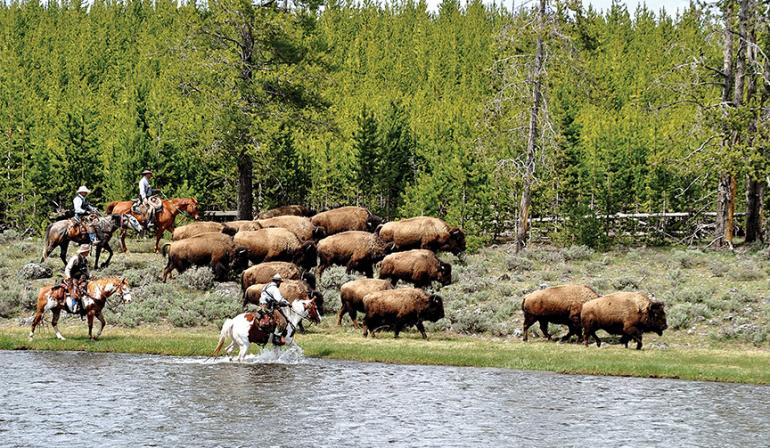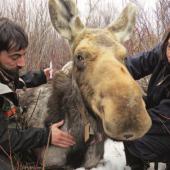Room to Roam
West-side bison decision explained.
Over the winter, Governor Steve Bullock released his decision to expand tolerance for bison in a limited area of Montana outside of Yellowstone National Park. The decision relied upon years of scientific analysis and consistently high-spirited input from the public. It provides guidelines for a more reasonable and balanced approach to managing bison that migrate into Montana.
The biggest change brought about by this decision is that Yellowstone bison can now use the Horse Butte area of West Yellowstone and areas to the north (including the Taylor Fork area) year-round, as long as bison numbers stay within manageable ranges that vary with the season. In the past, management protocol for bison on the Park’s west side (regulated by the federal/state Interagency Bison Management Plan implemented 15 years ago) called for bison to be hazed back to Yellowstone after May 15 each year. The reasoning for that push-back date was based on the circumstances and knowledge of the time (the existence of cattle in the area and presence of brucellosis in the Yellowstone herd).
However, years of bison-management operations on the ground revealed this arbitrary date to haze bison to be a futile endeavor. Often bison would be repeatedly pushed back to the Park where they would not stay. The portion of the Park where the bison were pushed experiences a harsher winter, with grasses not greening up until later. It’s Mother Nature and the green-up that dictate migration, not the calendar.
“We were putting forth a lot of effort in terms of collective agency staff time and funding to move these animals each spring only to have them come right back,” says Sam Sheppard, FWP Region 3 Supervisor. “Removing the May 15 haze-back date will help us allow bison to be bison and avoid expending already thinly-stretched management dollars.”
According to the release from the Governor’s office, this decision “acknowledges that bison are nomadic in nature, and they will move in and out of Montana in varying numbers depending on the population size, time of year, and especially environmental conditions.”
It’s important to note two major factors leading to this decision that have changed since the Interagency Bison Management Plan (IBMP) was implemented: there are no longer cattle on Horse Butte or on Forest Service land in the area, and scientific research shows the risk of transmission of brucellosis from bison to cattle to be minimal in the area, especially the risk from bull bison.
With that said, the flood gates have not been opened. This is a very measured step based on what ground operations can handle at this time. FWP, as an IBMP partner agency, will continue to manage bison and overall populations with the same management tools and with the same two central goals as under IBMP: to maintain a wild, free-ranging bison population; and to reduce the risk of brucellosis transmission from bison to cattle.
After many years of management experience, applied science, and listening to the public, FWP recognizes that some still have concerns about bison on the landscape. And to that end, FWP’s commitment to protecting private property and the cattle industry remain in place. The thoughtful, adaptive approach provides the added benefit of more time and space to once again accommodate this iconic animal in this part of Montana.
Andrea Jones is the FWP Region 3 information and education program manager.













